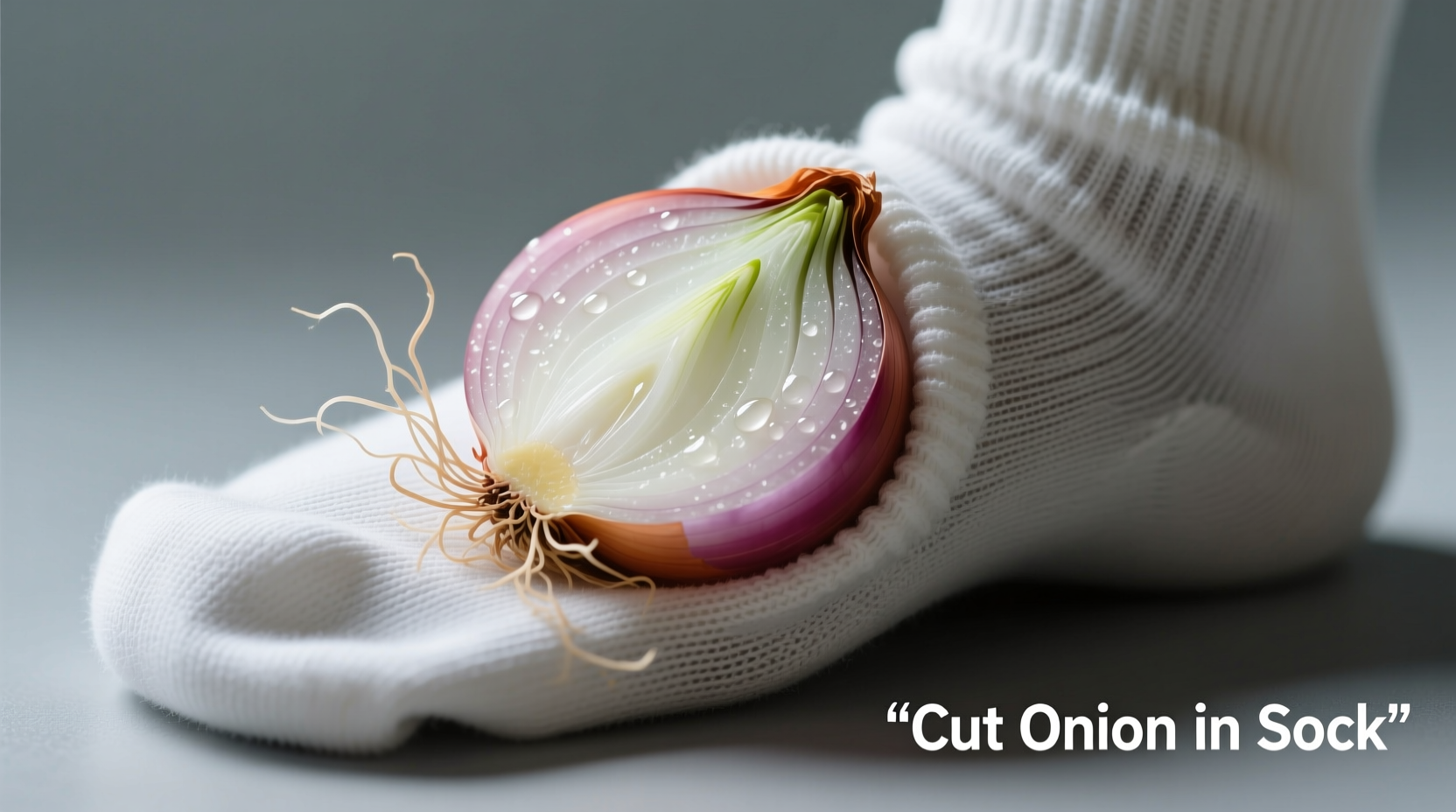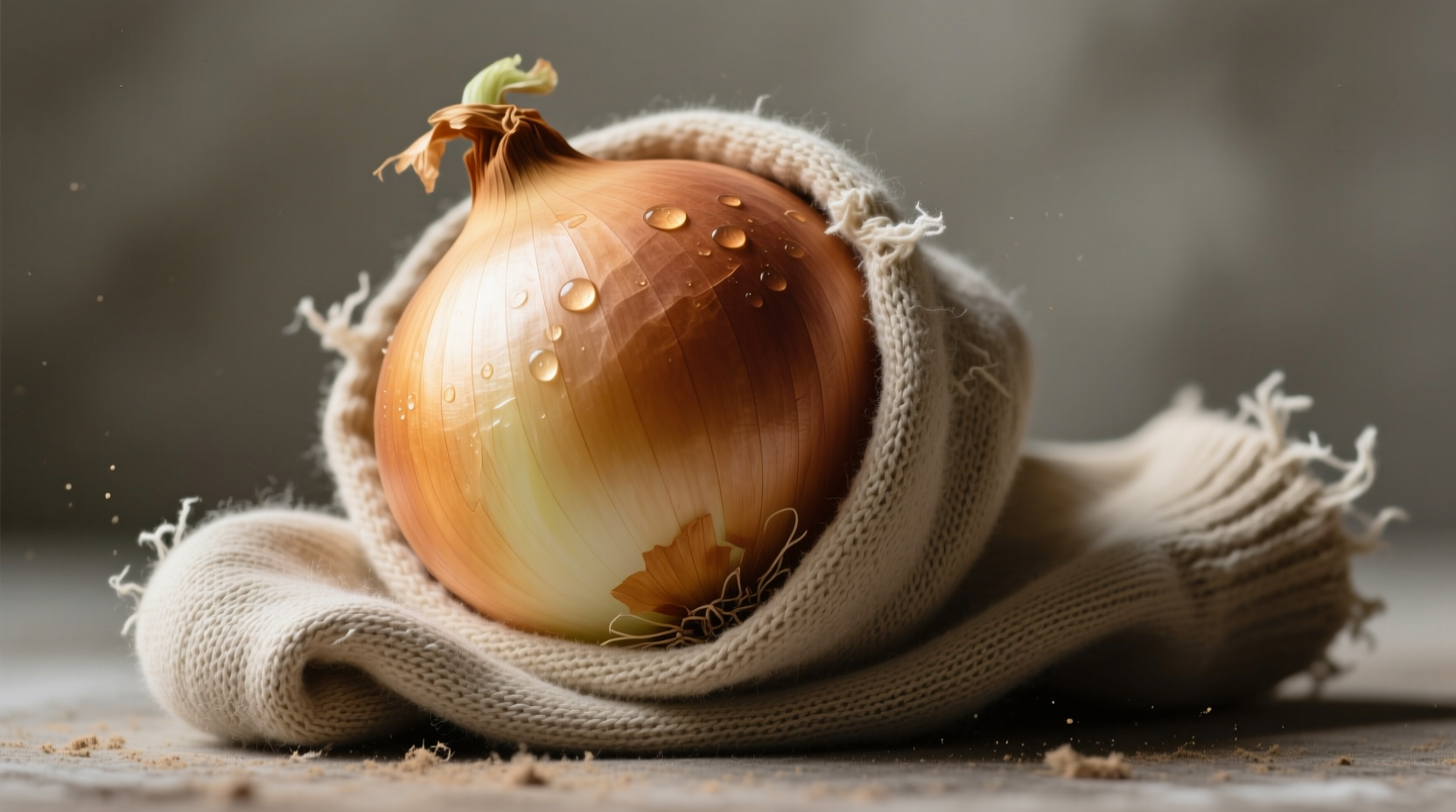For centuries, the "onion in the sock" remedy has circulated through generations as a supposed cure for colds, flu, and other ailments. Despite its persistence in folk medicine traditions, modern science reveals this practice has no basis in reality. Let's examine why this myth endures and what actually works for immune support.
The Origin of the Onion-in-Sock Folk Remedy
This practice likely stems from historical misunderstandings about how the body fights illness. In the 19th century, before germ theory was established, many believed diseases resulted from "bad air" or imbalances in bodily humors. Onions, with their strong smell and antimicrobial properties when eaten, became associated with purification.
European and American folk medicine traditions documented placing raw onions near sickrooms to "purify" the air. This evolved into the more direct application of placing onions against the skin, with feet becoming a popular target due to cultural beliefs about foot reflexology and "energy points."

Why the Onion-in-Sock Method Doesn't Work: Scientific Analysis
The fundamental flaw in this remedy lies in human physiology. Your skin serves as a protective barrier, not an absorption portal for healing compounds from external sources like raw onions. While onions contain beneficial compounds such as quercetin and allicin when consumed, these cannot penetrate the skin barrier in meaningful quantities.
| Claimed Benefit | Scientific Reality | Expert Assessment |
|---|---|---|
| Draws out toxins | Skin doesn't expel toxins through feet | "The body eliminates toxins through liver and kidneys, not foot absorption" - Dr. Elena Rodriguez, immunologist |
| Prevents colds | No evidence of viral prevention | "Viruses enter through respiratory tract, not feet" - CDC respiratory illness guidelines |
| Boosts immunity | Compounds don't absorb through skin | "Beneficial onion compounds require ingestion for metabolic processing" - Journal of Agricultural and Food Chemistry |
Potential Risks of This Folk Practice
Beyond being ineffective, the onion-in-sock method carries several potential risks:
- Skin irritation: Raw onion contains enzymes that can cause contact dermatitis, especially when trapped against skin for extended periods
- Delayed treatment: Relying on unproven remedies may postpone seeking appropriate medical care for serious conditions
- False security: Believing in ineffective treatments can lead to poor health decisions during illness
- Foot hygiene issues: Moist onion pulp creates an ideal environment for bacterial growth inside footwear
Evidence-Based Immune Support Strategies
Instead of unproven folk remedies, these scientifically supported approaches actually strengthen your immune system:
Nutritional Foundations
Research from the National Institutes of Health confirms that consistent dietary patterns significantly impact immune function. Focus on:
- Vitamin C-rich foods (citrus, bell peppers, broccoli) - supports multiple cellular functions of the immune system
- Zinc sources (oysters, beef, pumpkin seeds) - crucial for immune cell development and communication
- Garlic and onions when consumed - contain compounds with demonstrated antimicrobial properties
- Adequate protein intake - provides building blocks for immune cells
Lifestyle Factors That Actually Work
The American Journal of Lifestyle Medicine reports these evidence-based practices:
- Quality sleep: 7-9 hours nightly improves T-cell function and cytokine production
- Moderate exercise: 150 minutes weekly of moderate activity enhances immune surveillance
- Stress management: Chronic stress elevates cortisol, which suppresses immune response
- Hand hygiene: Proper handwashing remains the most effective method for preventing respiratory infections
When Folk Remedies Become Dangerous
The persistence of the onion-in-sock myth illustrates how harmless traditions can sometimes cross into dangerous territory. The World Health Organization warns that reliance on unproven remedies becomes problematic when:
- They replace evidence-based medical treatment for serious conditions
- They create false expectations about recovery timelines
- They spread misinformation that undermines public health efforts
During the 2020 pandemic, similar folk remedies (like ingesting bleach or excessive garlic consumption) caused actual harm. Always consult healthcare professionals before trying unconventional treatments, especially for children, elderly individuals, or those with compromised immune systems.
Critical Thinking for Evaluating Health Claims
When encountering health claims like the onion-in-sock remedy, apply these evidence-based evaluation techniques:
- Check the source: Is the claim coming from a medical professional or someone with relevant expertise?
- Look for studies: Are there peer-reviewed research papers supporting the claim? (None exist for onion-in-sock benefits)
- Consider mechanisms: Does the proposed method align with established biological principles?
- Seek consensus: Do major health organizations support this approach? (CDC, WHO, and medical associations do not)
Remember that correlation doesn't equal causation. If you placed an onion in your sock and then recovered from a cold, it was likely due to your body's natural immune response rather than the onion remedy.
Respecting Cultural Traditions While Prioritizing Health
Folk remedies often contain cultural wisdom worth preserving, even when specific applications lack scientific backing. The antimicrobial properties of onions when consumed are well-documented in food science literature. Many traditional cultures incorporated onions into healing broths and foods for good reason.
The key is distinguishing between practices that have stood the test of time for valid reasons versus those based on misunderstanding. Preserving cultural heritage while embracing evidence-based medicine creates the most robust approach to health and wellness.
Does placing an onion in your sock help with colds or flu?
No, there is no scientific evidence that placing an onion in your sock helps with colds or flu. This folk remedy lacks biological plausibility as the skin cannot absorb beneficial compounds from raw onions in this manner. Medical professionals confirm this practice has no therapeutic value for respiratory illnesses.
Can onions absorb toxins through the skin when placed in a sock?
No, onions cannot absorb toxins through the skin. The human body eliminates toxins primarily through the liver and kidneys, not through the feet. Skin serves as a protective barrier rather than an absorption portal for detoxification. This misconception stems from historical misunderstandings of human physiology before modern medical science.
Are there any health benefits to using onions in foot care?
While placing raw onions in socks provides no health benefits, onions do contain compounds with antimicrobial properties when properly prepared. Some traditional foot soaks incorporate cooked onion extracts for mild antifungal benefits, but these differ significantly from the raw onion-in-sock method. For foot health concerns, consult a podiatrist for evidence-based treatments.
What are scientifically proven natural remedies for cold prevention?
Evidence-based natural approaches include regular hand washing, adequate sleep (7-9 hours), stress management, and a nutrient-rich diet containing vitamin C, zinc, and garlic compounds. The CDC confirms that proper hand hygiene remains the most effective method for preventing respiratory infections. While onions have beneficial compounds when consumed, they don't provide special protection when placed in socks.











 浙公网安备
33010002000092号
浙公网安备
33010002000092号 浙B2-20120091-4
浙B2-20120091-4